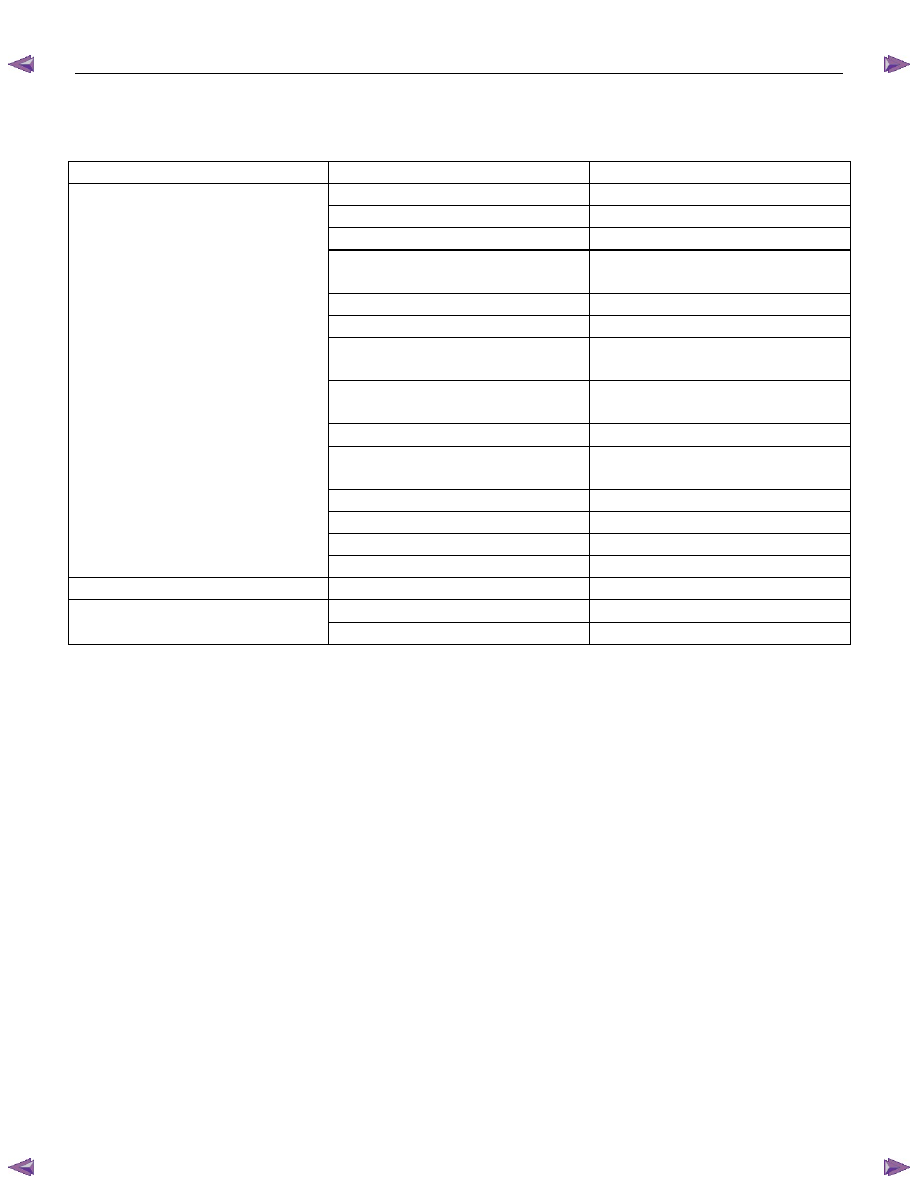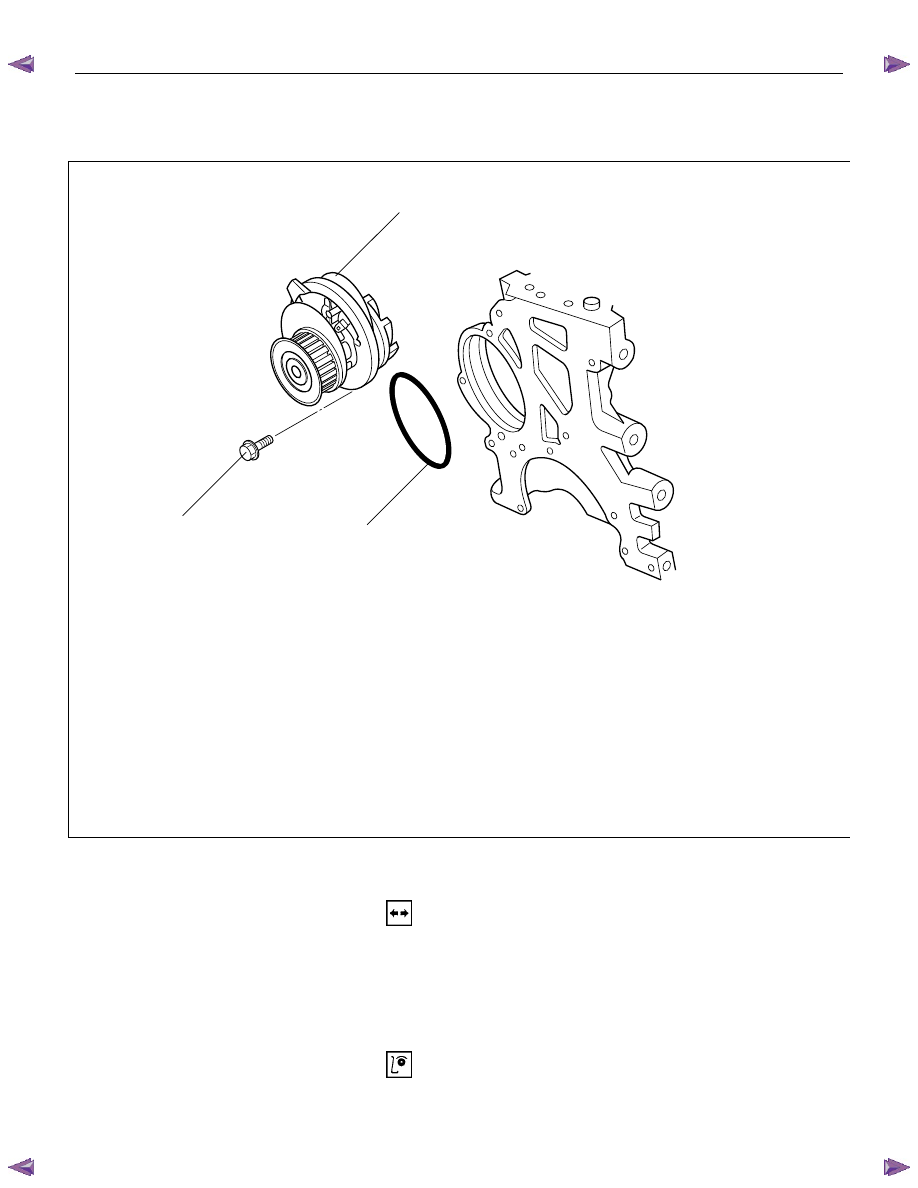Isuzu KB P190. Manual — part 527
6B-4 ENGINE COOLING
Antifreeze Solution
• Calculating mixing ratio
Mixing ratio
=
Antifreeze solution (Lit/gal.)
Antifreeze solution (Lit/gal.) + Water (Lit/gal.)
NOTE: Antifreeze solution + Water = Total cooling system
capacity.
• Total Cooling System Capacity
8Lit
• Mixing ratio
Check the specific gravity of engine coolant in the cooling
system temperature ranges from 0
°C to 50°C using a
suction type hydrometer, then determine the density of the
engine coolant by referring to the table.
NOTE: The LLC is 50% at all environment in order to prevent
the corrosion of cooling system parts.

ENGINE COOLING 6B-5
Diagnosis
Engine Cooling Trouble
Condition Possible
cause Correction
Engine overheating
Low Engine Coolant level
Replenish
Thermo mater unit faulty
Replace
Faulty
thermostat
Replace
Faulty Engine Coolant temperature
sensor
Repair or replace
Clogged radiator
Clean or replace
Faulty radiator cap
Replace
Low engine oil level or use of
improper engine oil
Replenish or change oil
Clogged exhaust system
Clean exhaust system or replace
faulty parts
Faulty Throttle Position sensor
Replace throttle valve assembly
Open or shorted Throttle Position
sensor circuit
Repair or replace
Damaged cylinder head gasket
Replace
Loosen V-belt tension
Adjust belt tension or replace.
Collapsed
hoses
Replace
Faulty Fan clutch
Replace
Engine overcooling
Faulty thermostat
Replace
Engine slow to warm-up
Faulty thermostat
Replace
Thermo unit faulty
Replace

6B-6 ENGINE COOLING
Draining and Refilling Cooling
System
Before draining the cooling system, inspect the system and
perform any necessary service to ensure that it is clean, does
not leak and is in proper working order. The engine coolant
level should be between the "MIN" and "MAX" lines of reserve
tank when the engine is cold. If low, check for leakage and add
engine coolant up to the "MAX" line. There should not be any
excessive deposit of rust or scales around the radiator cap or
radiator filler hole, and the engine coolant should also be free
from oil.
Replace the engine coolant if excessively dirty.
1. Completely drain the cooling system by opening the drain
plug at the bottom of the radiator.
2. Remove the radiator cap.
WARNING: TO AVOID THE DANGER OF BEING BURNED,
DO NOT REMOVE THE CAP WHILE THE ENGINE AND
RADIATOR ARE STILL HOT. SCALDING FLUID AND
STEAM CAN BE BLOWN OUT UNDER PRESSURE.
3. Disconnect all hoses from the engine coolant reserve tank.
Scrub and clean the inside of the reserve tank with soap
and water. Flush it well with clean water, then drain it. Install
the reserve tank and hoses.
4. Refill the cooling system with the engine coolant using a
solution that is at least 50 percent antifreeze.
5. Fill the radiator to the base of the filler neck.
Fill the engine coolant reserve tank to "MAX" line when the
engine is cold.
6. Block the drive wheels and firmly apply the parking brake
and place the shift lever in the "NEUTRAL" position.
7. Remove the radiator cap. Start the engine and warm it up at
2,500 - 3,000 rpm for about 30 minutes.
8. When the air comes out from the radiator filler neck and the
engine coolant level has gone down, replenish with the
engine coolant. Repeat this procedure until the engine
coolant level does not go down. Then stop the engine and
install the radiator cap. Let the engine cool down.
9. After the engine has cooled, replenish with engine coolant
up to the "MAX" line of the reserve tank.
10.
Start the engine. With the engine running at 3,000 rpm,
make sure there is no running water sound from the heater
core (behind the center console).
11. If the running water sound is heard, repeat steps 8 to 10.

ENGINE COOLING 6B-7
Water Pump
Water Pump and Associated Parts
Legend
1 Water Pump Assembly
2 O-Ring
3 Bolt
2
3
1
Removal
1. Disconnect battery ground cable.
2. Drain coolant.
3. Disconnect radiator hose (on inlet pipe side).
4. Remove timing belt, refer to "Timing Belt" in this manual.
5. Remove water pump assembly.
Inspection
Make necessary repair and parts replacement if extreme wear
or damage is found during inspection. Should any of the
following problems occur, the entire water pump assembly
must be replaced:

Нет комментариевНе стесняйтесь поделиться с нами вашим ценным мнением.
Текст